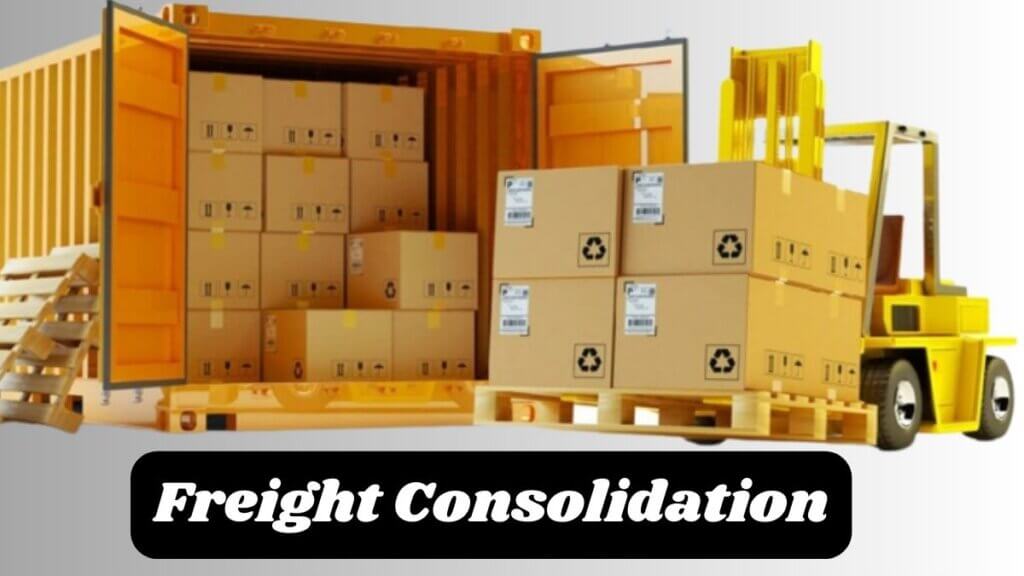
Freight Consolidation meaning
Freight consolidation refers to the process of combining multiple smaller shipments from different shippers into a larger, more efficient shipment. It involves grouping several orders or shipments bound for similar destinations into a single load, thereby optimizing transportation resources and reducing costs.
Advantages of Freight Consolidation
Cost Savings:
One of the primary benefits of freight consolidation is cost savings. By combining smaller shipments into a larger one, shippers can benefit from economies of scale and negotiate better rates with carriers. This reduces transportation costs per unit and can result in significant savings.
Improved Efficiency:
Consolidating shipments allows for better utilization of transportation resources. Instead of multiple trucks making individual deliveries, a single truck can carry multiple shipments, maximizing capacity and reducing the number of vehicles on the road. This leads to improved efficiency and reduced fuel consumption.
Reduced Handling:
Consolidation minimizes the need for intermediate handling and transfers. With fewer touchpoints, the risk of damage or loss is reduced, as well as the associated labor costs. It streamlines the shipping process and decreases the chances of errors or delays.
Environmental Impact:
By consolidating shipments, the overall carbon footprint is reduced. Fewer trucks on the road result in lower emissions, promoting sustainability and environmental responsibility.
Disadvantages of Freight Consolidation:
Longer Transit Times:
Combining multiple shipments into a single load can extend the overall transit time. Shippers may need to wait until enough orders accumulate to fill a truck, which could delay delivery for some customers. This may not be suitable for time-sensitive or urgent shipments.
Lack of Flexibility:
Freight consolidation requires coordination and synchronization among various shippers and carriers. It may limit the flexibility of scheduling and routing options, as shipments need to align for consolidation. Changes in individual shipment requirements or urgent modifications can be challenging to accommodate.
Potential for Loss or Damage:
Although consolidation reduces handling overall, there is still a risk of loss or damage during transportation. If a shipment within the consolidated load encounters an issue, it may affect other shipments as well. Adequate packaging and insurance coverage should be considered to mitigate these risks.
When to Use Freight Consolidation?
Regular or Batch Shipments:
Freight consolidation is beneficial when there is a consistent flow of smaller shipments from multiple shippers. Instead of dispatching each order individually, consolidating them into larger loads offers cost and operational advantages.
Non-Urgent Deliveries:
If time constraints are not critical, such as with bulk or non-time-sensitive shipments, consolidation can be a viable option. Longer transit times are offset by the cost savings achieved through consolidation.
Cost Optimization:
When looking to reduce transportation expenses, freight consolidation can be an effective strategy. It is particularly useful when the volume of individual shipments does not justify the cost of separate transportation arrangements.
Companies aiming to reduce their environmental impact can adopt freight consolidation as part of their sustainability initiatives. Consolidation leads to fewer trucks on the road, resulting in reduced carbon emissions and promoting greener logistics practices.
Ultimately, the decision to use freight consolidation should be based on careful analysis of shipment characteristics, customer requirements, cost considerations, and the overall efficiency of the supply chain.
Example:
Let’s consider a scenario where several small businesses located in the same area need to ship their products to the same destination. Instead of each business arranging separate shipments, they decide to opt for freight consolidation.
The businesses combine their individual shipments into a single larger load, which is then transported by a carrier. This allows them to benefit from reduced transportation costs as they can negotiate better rates due to the larger shipment volume.
Additionally, it optimizes the use of transportation resources, reducing the number of trucks on the road and minimizing fuel consumption. By consolidating their shipments, the businesses save money, improve efficiency, and contribute to a more sustainable supply chain.
Frequently Asked Questions
- How does freight consolidation reduce costs?
Freight consolidation combines multiple smaller shipments into a larger load, allowing for better negotiation of rates with carriers and benefiting from economies of scale, resulting in cost savings.
- What are the potential drawbacks of freight consolidation?
Some disadvantages include longer transit times as shipments need to be accumulated before dispatch, reduced flexibility in scheduling and routing options, and the potential for loss or damage to affect multiple shipments within the consolidated load.
- When is freight consolidation beneficial?
Freight consolidation is useful for regular or batch shipments, non-urgent deliveries, and when cost optimization or sustainable supply chain practices are priorities. It is best suited for scenarios where a consistent flow of smaller shipments can be combined into larger loads for efficiency and cost-effectiveness.
